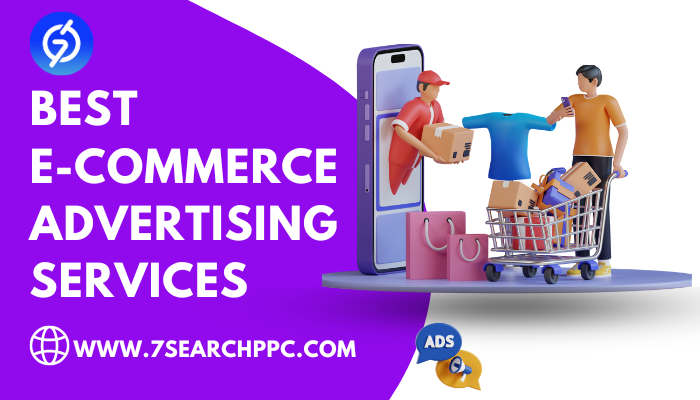Running E-commerce Ad Campaigns can feel like a balancing act. You want to drive sales and traffic without draining your budget. Ever felt like you’re spending more on ads than you’re earning? Many online store advertisers face this dilemma. The good news? With a few tweaks, you can make your ads work harder and smarter, saving you money in the process. Let’s explore how.
Understanding E-Commerce Ad Campaign Costs
What Drives Costs in E-Commerce Ad Campaigns?
Your ad expenses depend on factors like competition, keyword selection, and audience targeting. A poorly optimized campaign can drain your budget without delivering results.
Common Factors That Inflate Advertising Budgets
Unclear goals, vague targeting, and irrelevant keywords are common culprits. Identifying these pitfalls is the first step to managing costs effectively.
Choosing the Best Ad Network
How to Select the Best Ad Network for Your Goals
Different platforms serve different purposes. For example, Google Ads excels at search-based targeting, while Meta Ads are great for social media engagement.
Top Platforms for Online Store Advertising
Some of the best ad networks for e-commerce include:
- Google Ads
- Meta (Facebook and Instagram) Ads
- Amazon Advertising
Choose one that aligns with your audience and objectives.
Defining Clear Objectives
Why Goals Matter for Cost Management
Without clear objectives, your ads are like arrows shot in the dark. Well-defined goals keep campaigns focused and budget-friendly.
Examples of SMART Advertising Goals
- Increase sales by 20% in 3 months
- Reduce cost per conversion by 15%
- Achieve a 10% higher click-through rate (CTR)
Optimizing Your Ad Budget
How to Set a Realistic Budget for E-Commerce Ads
Begin with a manageable budget. Allocate more to campaigns that perform well and trim underperforming ones.
Strategies to Maximize ROI
Focus on high-intent audiences and invest in campaigns that yield measurable returns.
Targeting the Right Audience
The Role of Audience Segmentation in Cost Reduction
Segmenting your audience ensures your ads reach people most likely to convert. This reduces wasted ad spend significantly.
Avoiding Wasteful Spending with Precise Targeting
Use detailed demographics and behavior data to refine your audience.
Keyword Strategies for Cost Savings
Using Negative Keywords Effectively
Negative keywords help exclude irrelevant searches, saving you from paying for unproductive clicks.
Balancing Competitive and Long-Tail Keywords
While competitive keywords drive traffic, long-tail keywords offer better value for niche products.
Improving Ad Relevance
How Quality Scores Affect Costs
Platforms like Google Ads reward relevant ads with lower costs. Higher relevance equals better ROI.
Writing Ad Copy That Resonates
Your ad copy should address customer pain points and offer clear solutions.
A/B Testing for Cost Efficiency
What Is A/B Testing in E-Commerce Ads?
A/B testing compares two versions of an ad to find out which performs better. It’s essential for minimizing waste.
Examples of Effective A/B Testing
Test different headlines, visuals, or calls to action to optimize performance.
Leveraging Ad Extensions
Types of Extensions That Add Value
Use price, location, and call extensions to provide extra information and increase clicks.
How Extensions Can Reduce Click Costs
Extensions enhance user experience, often leading to higher Quality Scores and lower costs.
Using Retargeting to Reduce Acquisition Costs
The Benefits of Retargeting in E-Commerce Marketing
Retargeting ads re-engage users who’ve interacted with your site, making conversions more likely.
How to Build Effective Retargeting Campaigns
Focus on products viewed or abandoned in carts to capture lost opportunities.
Monitoring and Adjusting Campaigns
Why Continuous Monitoring Matters
Ad performance fluctuates. Regular monitoring ensures campaigns remain effective.
Tools for Tracking Campaign Performance
Platforms like Google Analytics and Ad Manager provide insights to fine-tune your campaigns.
Collaborating with E-Commerce Ad Services
When to Consider Hiring Experts
If managing campaigns feels overwhelming, consider hiring professional e-commerce ad services.
Advantages of Professional E-Commerce Marketing Support
Experts can help reduce costs by refining strategies and handling complex campaign setups.
Emerging Trends in Cost-Effective E-Commerce Advertising
The Role of AI in Reducing Costs
AI tools optimize bids and target audiences more efficiently, cutting unnecessary spend.
Automation Tools for Budget Optimization
Automation simplifies tasks like bid adjustments, saving time and money.
Conclusion
Reducing costs on your E-commerce Advertising Campaigns isn’t just about spending less—it’s about spending smarter. By implementing these strategies, you can achieve better results without breaking the bank. It’s time to make every ad dollar count!
FAQs
How can I lower the cost of my e-commerce ads?
Ans. Focus on targeting, use negative keywords, and optimize your campaigns regularly.
What is the best ad network for e-commerce?
Ans. Google Ads, Meta Ads, and Amazon Ads are popular options, depending on your goals.
Why is A/B testing important in ad campaigns?
Ans. It helps identify the most effective strategies, reducing wasted spend.
Can retargeting save advertising costs?
Ans. Yes, retargeting focuses on users already familiar with your brand, increasing conversions efficiently.
When should I hire e-commerce ad services?
Ans. If managing campaigns feels overwhelming or results are underwhelming, professional support can help.
